I think you’ll agree with me when I say that surviving in the wild without drinkable water is difficult. Impossible even.
Well, it turns out that there are different methods to help you filter your water and make it drinkable in the wild.
And in today’s article, I’m going to show you exactly how to filter water in the wild, build your domestic filter, and also filter ocean water and make the water drinkable.
Ready? Let’s get going then!
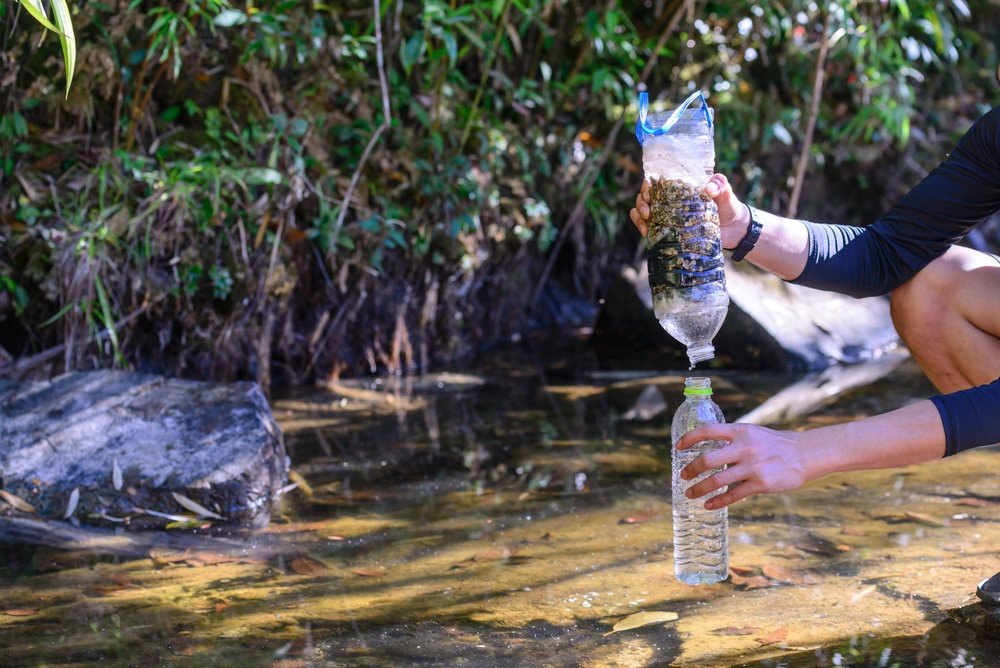
Contents
How To Filter Water In The Wild
In the developed world, including America, access to safe, drinkable, clean, and odor-free water could be as uncomplicated as just rotating a tap’s handle. Although, outside the comfort of home, access to potable water could get more complex and need more work.
What does that mean for you?
Say, for instance, you went backpacking in the wild with all the necessary gear, and you travel with the right amount of water for the journey. Or you’re living in an underdeveloped country, and you don’t have access to clean potable drinkable water, and you are left stranded in a community without a drinkable water supply (or less apocalyptically, only living in a town whose water source has been temporarily contaminated). The correct technique can be varied for most of these cases, depending on where you are, your finances, how lengthy you need your filtering products to last, etc.
Now off we go!
Boiling
If you’re left stranded without drinkable, potable water in the wild, boiling your water is an uncomplicated way you can use to purify water in the wild. One of the advantages of using the boiling method is that you won’t necessarily require any special tool, and it’s free. A container and the skill to ignite a fire are enough to get going.
Place the water in a container to start the boiling process. Then, place it over the open flame of the camping fire. When a rolling boil is achieved, you’ll have to keep it boiling for a few seconds. At higher altitudes, you’re going to have to boil the water for at least three minutes rather than just one. This is going to destroy microbes, giardia, and cryptosporidia.
Bear in mind that if the water is murky, you can also filter before consumption to eliminate impurities to make the water cleaner. Pour the water into things like a tea strainer or sterile linens to filter.
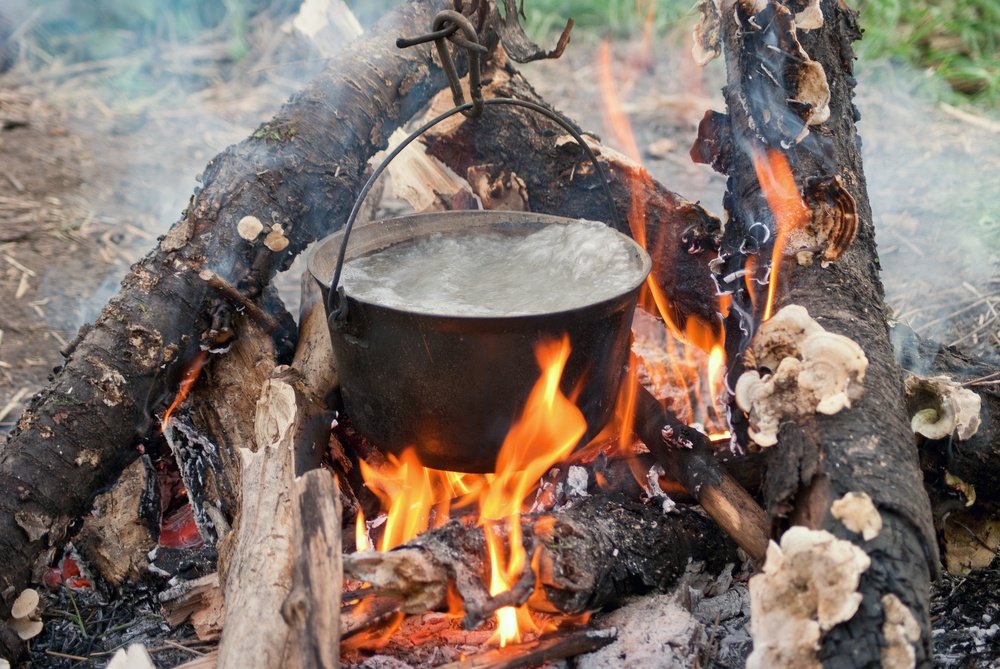
Pros
- Affordable
- Stress free
- Efficient in the detoxification of dangerous microbes
Cons
- It’s not going to take care of chemical pollution or heavy metals
- It can be time-consuming to boil enough water for a few people
- Cooling sometimes takes time
Survival straws
Survival straws are mini, handy, and potentially lifesaving water filtration gear important to carry along on your journey to the wild. It’s a little, light water filter that you can use by inserting it internally into your water supply and merely drinking
Let me explain why!
This water filtration gear is made up of a hollow fiber membrane that can filter up to one thousand gallons which is more than enough to provide an adequate amount of water when you’re in the wild. It removes off nearly all microbes, pathogens, bacteria, and even microorganisms.
On the other hand!
To make use of this gear, open the cover on both ends and start by jutting the straw’s non-drinking end into the water for a few seconds, approximately 10 seconds. Take a few sips to get the water flowing into the straw. You could very well drink as much as you like using the straw. Once you’re through, you’re going to blow out the residual water off through the base of the straw and bring the cover back on.
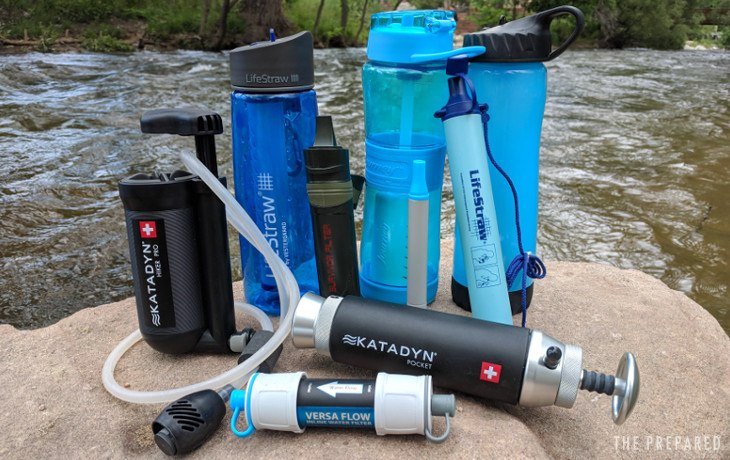
Pros
- It kills almost all parasites and microbes present
- It’s easier to carry and pack
- It enhances the water flavor
- The whole water filtration process is fast and easy
Cons
- It doesn’t kill microbes from the virus family
- It clogs easily
UV water filtration system
If you’re a tech savvy person trying to find a way to make your water safe through technology, you should go for the UV water filtration method. With this process, artificial UV light is used to destroy bacteria, protozoa, and viruses. It works quickly. With the SteriPen, a high quality UV light filter gear, you only need to collect the amount of water you intend to filter, then lower the filter into the water, and stir for around 1-2 minutes.

Pros
- Works swiftly
- Lightweight and easy to move around
- Taste is improved
Cons
- It’s expensive
- Needs power
Do you intend on shopping for an already built filter and need help? We’ve got something for you too! This article shows you the best water filters available in 2023. Please give it a read.
How To Build Your Domestic Filter
The ability to make your improvised filtration system has enormous benefits. Making one for yourself can be cheaper than a commercial one, and it also comes with the ability and opportunity to expand it as much as you want. There’s a time that it comes to your ability to build a water filter in the wild to survive. We understand that these are extreme and rare scenarios, but they can occur. So We’re going to aid you in understanding how to build a water filter in the wild.
I’ll show you!
Bio Filter
The Bio Filter is a domestic system made up of three distinct layers of gravel, sand, and activated charcoal. It is a modernistic and easy filtering method used to filter water in the wild and regiment the larger particles at the summit to the smaller ones at the base, making the water pure.
Here are items you’d need to build a biofilter:
- Screen
- Hole saws
- Activated charcoal
- Five food-grade five-gallon bucket
- Gravel
- Plastic plumbing fittings
- Sand
It’s time to begin!
You first begin with turning your gallon upside down and then making a hole at the top to put in your materials. The first layer is gravel that is shaped like a pebble that prevents particles and perhaps even animals from entering.
Then it’s time to add the sand. The sand filters little particles that found a way to slip through the first sheet. Now to the last component, consisting of activated carbon. It is extremely effective against the chemicals and bacteria that might be found in the liquid. This is what makes drinking water safe.
In my experience!
Remember to cut a hole wide enough to allow you to pour the soil and water in at the top. You can even get a hold of it by placing it on top of a bucket. Aside from that, you’ve just made a carbon filter of your own. You can incorporate many more materials that you find useful, and you can change the style if you like. There is no one-size-fits-all method.
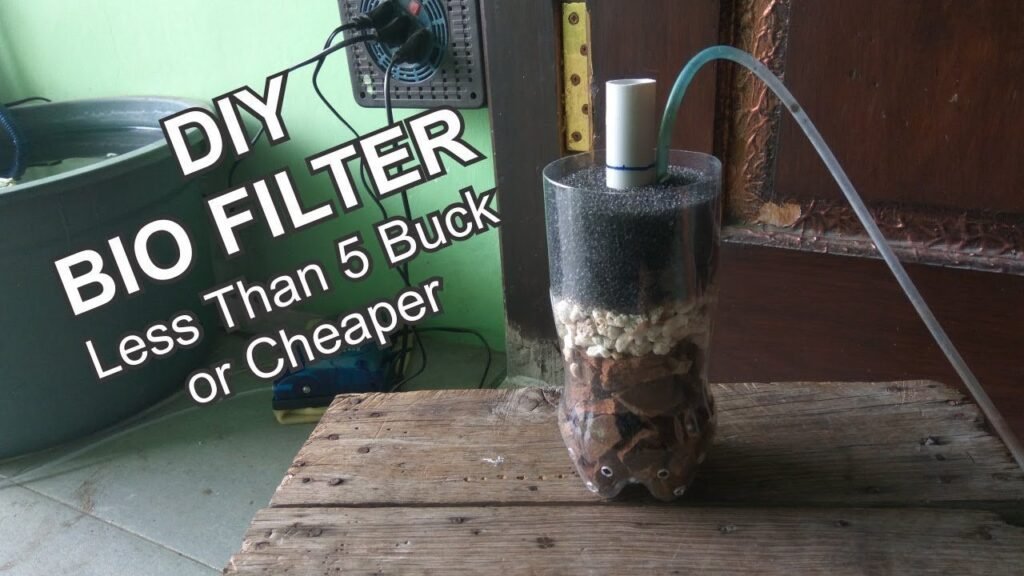
Improvised Charcoal Filter
If this sounds like something you’ve learned before, you’re correct! The domestic charcoal water filter concept is very similar to that of the Bio-Filter, except it does not use gravel. On the other hand, this distiller is safer if you’re outside and can’t make a complete bio-filter. You’ll need the following items:
- Piece of cloth
- Sand
- 2-Liter plastic bottles
- Charcoal
You put the sand over the sheet of charcoal in the same manner you did in the bio-filter. Since this is the main purifier, they must be in bits as you bring them inside so that you may clean the stream. The distinction between this and our previous filtration device is that the water you get would be murky and unfit to drink straight away. You’ll have to cook it first before tasting it.
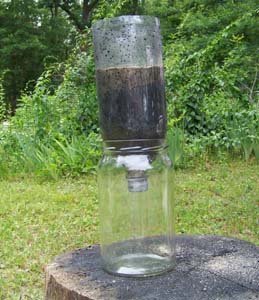
Are you making plans to go on a camp trip? Looking for ways to filter water outdoors? Here are ways you can easily filter your water in the wild.
How To Filter Ocean Water
There’s also a possibility of finding yourself stuck in the wild, with the only water source close to you being an ocean. So what do you do when you find yourself in this situation?
Here’s the good news!
Filtering saltwater on a limited basis with basic items is feasible. Pot distillers can speed up the process in a survival environment, but salvaged products can also be used to desalinate water.
Desalinators are not affordable, but they are necessary in the case of a long-term situation at sea or near some body of saltwater where freshwater is scarce.
Let’s get on with it then!
How to filter saltwater for survival? When it comes to searching for the right method that fits you, it is based on your situation. We’ll go through a couple of different ways and some things that you can purchase and have on hand.
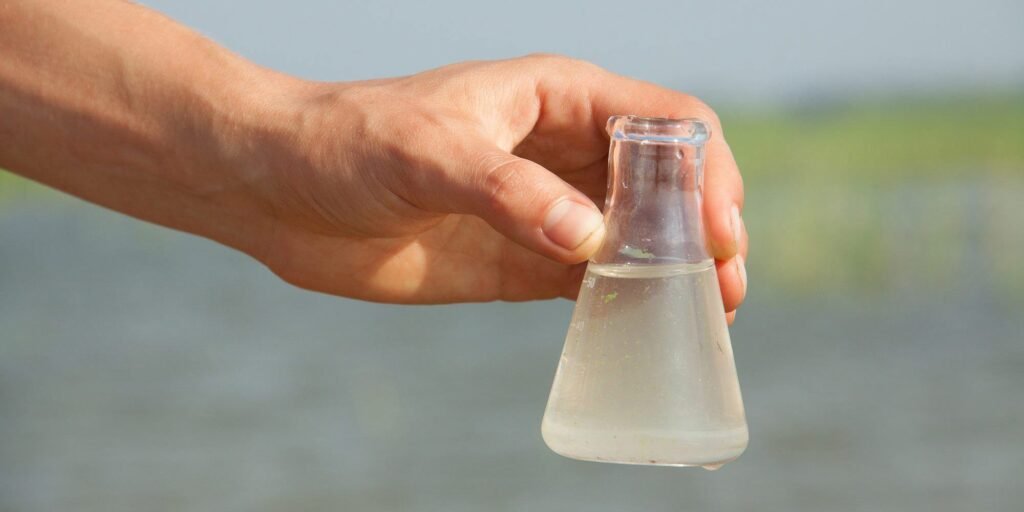
The Raincoat Method
You can extract salt from water by heating it, so you’ll need a container to collect the condensation. A raincoat or poncho would suffice. To do so, construct a tent out of the poncho or raincoat and put it over the pot of boiling water. Position containers around the sides of the coat to capture the condensation as it drips down. There is a valid excuse to have an extra poncho on hand.
Bucket and Plastic Method
This method is dependent on a few scenarios working in your favor. For instance, you would need sunlight to make it work.
Other items needed:
- Bucket
- Small container
- Foil
- Stones
Put the container in the bucket. Funnel the saltwater across the container, keeping track not to fill it to the point that it floats. Cover with foil and set a small stone or weight on top of the container to curl the surface in. When the salt water evaporates in the light, condensation forms, which drips into the container, this is time consuming, but if you have the right items and requirements, it will function.
But wait, there’s more!
Seeutek 2 Gallon 8L Water Alcohol Distiller
Desalinators are not cheap and can be used for several filtering tasks. This is the tiniest size that they make. The biggest tub is 8 gallons, which can be suitable for larger projects. However, the 2 gallon is a decent size since it can be conveniently packed when not in service and is not especially large, making it easy to carry with you.
Frequently Asked Questions
What is the most secure way to purify water?
When it comes to ways to purify water in the wild, boiling is the most popular method. It’s easy to do, with no room for error. In as much as you have a heat source, you can do so everywhere. Here is a video on some secure ways of purifying water:
Is it appropriate to depend on a single approach in the wilderness?
When you’re outdoors, it’s safe to have at least two ways of purifying or filtering water. Assume you’ve prepared matches to boil water, and that’s the only tool you want to use. What happens if you can’t find your lighter? You’ll be in serious danger if you don’t have a contingency plan in place.
Should you filter your water?
Any water collected outdoors should be deemed potentially polluted and treated accordingly. And if it seems to be obvious, dangerous creatures may be lurking under the soil. Only a few sips of this water will make you incredibly sick.
Because of this, and because there are so many safe and convenient ways to clean water, you should only drink raw water in an emergency.
Summary
Conclusively, all of the above mentioned ways to filter water in the wild, build your domestic filter in the wild, and filter ocean water will make surviving in the wild easier for you. No matter when and where you are. Though, there are different methods unique to your location at a particular time and the items you have in hand. Don’t forget to pack with some of the items listed above. I hope you enjoy your adventure in the wild!

